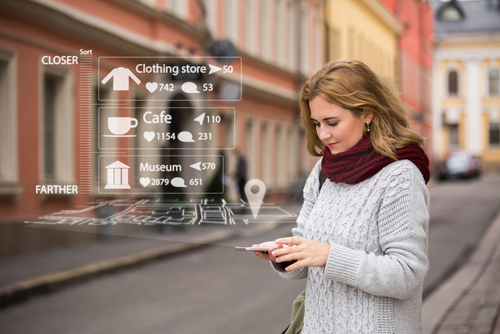We’ve all heard about location-based marketing, but what does this general term mean when it comes down to the nitty-gritty of the types and how to put them into practice?
The ability to efficiently target a preferred audience is a useful skill for all types of businesses. Using location data is extremely beneficial for a business because you have a better chance at achieving your marketing campaign goals through specific targeting.
Geotargeting and geofencing are two different tactics a marketer may use to reach potential customers based on their location. Knowing how and when to appropriately use these tactics is crucial for the success of more specific marketing campaigns. Although the names of each method do not sound far off, they cannot be used for the same scenarios.
Let’s dig into the variations between these two tactics.
What is Geotargeting?
Geotargeting allows a marketer to send notifications to the audience you want to target based on where ideal customers are located. This tactic utilizes demographics and location data such as IP addresses to decide on which areas to go for.
Make it happen
The size of the location is up to your discretion since it may vary for each campaign goal. You can target a town, county, or any region that will enable you to reach that goal and align with your budget.
It makes sense for a business to reach specific audiences that have certain geographical variations. For instance, if an air conditioning company sends out advertisements to people that live in cold climates rather than warm climates, it would be less beneficial for them. Being able to reach your intended audience in the right setting is essential for the success of each respective marketing campaign.
What is Geofencing?
Geofencing essentially creates a virtual “fenced-off” area and sends advertisements to people that may enter or leave the area. This method provides a more urgent feeling for the prospect to click on the advertisement since they are already located at the relevant location.
Make it happen
You can reach the audience on a more personal level when you send notifications that use their contact information or use specific keywords that they may be more interested in.
For example, you could show an ad offering a discount with a limited amount of time, create a special deal for walk-in customers, or even provide a secret keyword that they must mention to make it fun if your brand has a playful vibe. The possibilities are endless.
Benefits of Geotargeting and Geofencing
Geotargeting and geofencing are both valid and useful marketing tactics, and both have their own benefits.
Geotargeting can be used in a more universal way than geofencing. Many campaigns can use geotargeting in the B2B world, whereas companies can use geofencing in more specific and rare cases, typically in retail or other specific locations. Geotargeting is beneficial because it creates a more personalized ad and can improve the ad budgeting of the business. By choosing a specific location among other targeting specifics, you will not be spending as much money since the ads that you are sending out are narrower for customers that have a higher chance of following through with the intent of the ad.
Geofencing benefits your organization through the increase of a few metrics. Engagement and analytics should increase after implementing a geofencing marketing strategy. Consumers are more aware of promotions and opportunities because they receive relevant notifications. If you can successfully push your audience to visit your store, you can see what they tend to buy and cater future ads to their tendencies. Overall, geofencing typically results in increased sales, the duration of the consumer within the store, and the frequency of visits.
Geotargeting & Geofencing Marketing Strategies
One way to use geotargeting in your campaigns is by pushing recommendation notifications to consumers to inform them of certain items that may be in stock at their preferred store location.
On the other hand, geofencing can be implemented by requesting feedback from the consumer while their interaction in the store has just occurred.
Location-based marketing is just one tactic of many to implement in B2B advertising campaigns. Discover how to put these strategies into action with our guide.
Download the eBook: Our Guide to B2B Marketing: A Framework You Can Implement
.png?width=900&name=Untitled%20design%20(1).png)
